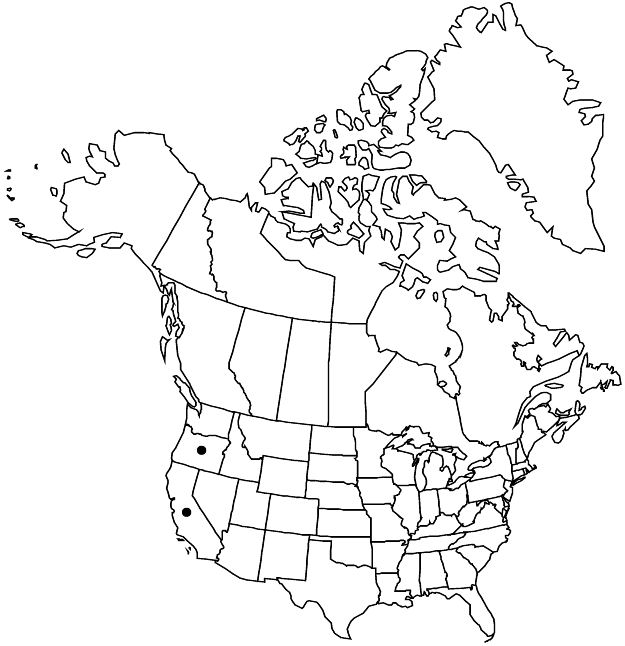Rosa pisocarpa subsp. ahartii
Madroño 55: 171, fig. 1. 2008.
Plants rarely forming thickets. Stems usually solitary or loosely clustered, (2–)4–14(–18) dm; infrastipular prickles 0 or 1(or 2), 2–5 mm. Leaves (5–)6–11(–13) cm; leaflets 5–7, most commonly 5, terminal blade 20–45(–60) mm. Inflorescences 1–3(–10+)-flowered. Flowers: sepal tip to 7 mm, abaxial surfaces usually eglandular, rarely stipitate-glandular; carpels 32–34. Hips subglobose to ovoid, 8–13 mm diam., gradually to abruptly narrowed to neck 2.5–3.5 mm diam. Achenes 5–20. 2n = 28.
Phenology: Flowering Jun–Aug.
Habitat: Streamsides, meadow margins, roadsides in woodlands, seasonally moist areas in openings of midmontane forests
Elevation: 100–1700 m
Discussion
Subspecies ahartii comprises populations from the northern Sierra Nevada and southern Cascade Range (B. Ertter and W. H. Lewis 2008). Stems tend to have relatively few (or no) prickles, relatively large ovate leaves, and relatively few flowers.
Selected References
None.
